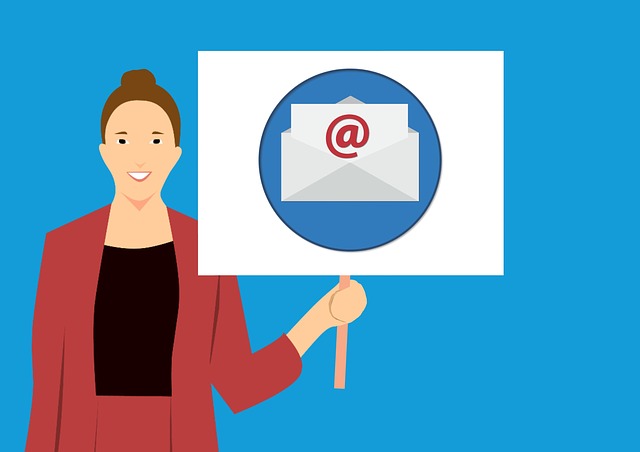Are you a nonprofit organization looking to make the most of your email marketing campaigns? Then listen up, because we’re about to reveal the 12 email marketing mistakes that you should avoid at all costs.
These mistakes have the potential to undermine the effectiveness of your emails and hinder your organization’s goals. By juxtaposing the do’s and don’ts of email marketing, we aim to shed light on the detrimental impact these mistakes can have.
From neglecting to segment your email lists, to overloading subscribers with too many messages, to ignoring mobile optimization, we’ll cover it all.
Plus, we’ll show you how to rectify these mistakes and optimize your email campaigns for maximum impact. So, get ready to take your email marketing to the next level and start engaging with your audience like never before.
Key Takeaways
- Nonprofits should avoid overloading subscribers with too many messages, as this can have a negative impact on engagement and effectiveness.
- Segmenting email lists is crucial for reaching the right audience and personalizing messages, which can lead to increased engagement and donations.
- Neglecting mobile optimization in email marketing strategies can hinder user experience and engagement, so it is important to prioritize mobile responsiveness.
- Testing and optimizing email campaigns is essential for identifying deliverability issues, determining elements that resonate with the audience, and driving action and support for nonprofits.
Neglecting to Segment Your Email Lists
Don’t make the mistake of neglecting to segment your email lists – it’s crucial for reaching the right people with the right message!
Segmentation benefits your nonprofit in multiple ways. By dividing your email list into different segments based on factors like demographics, interests, or past interactions, you can tailor your messages to each group’s specific needs and preferences. This personalized approach increases the chances of engaging your subscribers and driving them to take action.
Additionally, email list organization becomes much easier when you segment your contacts. You can make targeted campaigns, track the performance of each segment, and adjust your strategies accordingly. By neglecting segmentation, you risk sending generic messages that may not resonate with your audience.
So, make sure to segment your email lists effectively to maximize your nonprofit’s impact.
Now, let’s dive into the next topic of overloading subscribers with too many messages.
Overloading Subscribers with Too Many Messages
You might be overwhelming your subscribers by bombarding them with an excessive number of messages, causing frustration and annoyance.
Subscriber engagement strategies are crucial for the success of your email marketing campaigns, and bombarding your subscribers with too many messages is not an effective approach. Instead, focus on quality over quantity.
By sending fewer but more targeted and relevant messages, you can increase subscriber engagement and avoid annoying your audience. Take the time to segment your email lists based on demographics, interests, or past interactions to ensure that your messages are tailored to each subscriber’s needs and preferences.
By measuring email campaign success through metrics like open rates, click-through rates, and conversions, you can determine the optimal frequency and timing of your messages. Avoid overwhelming your subscribers and keep them engaged by finding the right balance.
Moving on to the next section, failing to personalize email content is another common mistake to avoid.
Failing to Personalize Email Content
Imagine receiving an email that feels like it was crafted just for you, with personalized content that speaks directly to your interests and needs. Personalization benefits your nonprofit in many ways, increasing engagement, loyalty, and ultimately, donations. To achieve this level of customization, there are several email customization techniques you can employ.
First, segment your subscriber list based on their interests, demographics, or past interactions with your organization. This allows you to send targeted content that resonates with each group. Second, use dynamic content that changes based on the recipient’s behavior or preferences. This ensures that each subscriber receives the most relevant information. Third, personalize the subject line and email body with the recipient’s name or other relevant details. This small touch can make a big difference in capturing their attention.
By personalizing your email content, you show your subscribers that you care about their individual needs and interests. This increases the chances of them opening, reading, and taking action on your emails. Don’t miss out on this opportunity to connect with your audience on a deeper level. Ignoring mobile optimization, on the other hand, can lead to a frustrating user experience and missed opportunities for engagement.
Ignoring Mobile Optimization
Neglecting mobile optimization can hinder user experience and limit potential interactions. In today’s digital age, it’s crucial for nonprofits to recognize the importance of mobile responsiveness in their email marketing strategies.
With a significant portion of users accessing emails on their smartphones or tablets, failure to optimize for mobile can result in a frustrating experience for recipients. Mobile responsiveness ensures that your emails adapt to different screen sizes, making them easy to read and navigate. Additionally, design consistency across devices builds credibility and trust with your audience.
By neglecting mobile optimization, you risk alienating a large portion of your target audience and missing out on valuable engagement opportunities.
Transitioning into the next section, neglecting to test and optimize email campaigns can further hinder your nonprofit’s success.
Neglecting to Test and Optimize Email Campaigns
Failing to conduct thorough testing and optimization can significantly hinder the effectiveness of your nonprofit’s email campaigns. One of the key aspects to consider when testing and optimizing your email campaigns is email deliverability. Without proper testing, you may not be aware of any issues that could prevent your emails from reaching your supporters’ inboxes.
By regularly testing your email campaigns, you can identify any deliverability issues and take steps to improve them. Additionally, A/B testing can help you determine which elements of your emails are resonating with your audience and driving engagement. By testing different subject lines, content, and calls to action, you can optimize your email campaigns for maximum impact.
Make sure to include a clear call to action in your emails to encourage your supporters to take the desired action. Transitioning into the next section, forgetting to include a clear call to action can diminish the effectiveness of your nonprofit’s email marketing efforts.
Forgetting to Include a Clear Call to Action
Don’t forget to include a clear call to action in your nonprofit’s email campaigns to ensure that your supporters know exactly what action you want them to take and are motivated to do so. Remember, ‘actions speak louder than words.’
Here are some discussion ideas to help you improve your email campaigns:
-
Improving subject lines: Craft compelling subject lines that grab attention and entice recipients to open your emails. A well-crafted subject line can increase open rates and engagement.
-
Enhancing email design: Create visually appealing emails that are easy to read and navigate. Use eye-catching images, clear fonts, and a clean layout to keep your recipients engaged and focused on your call to action.
-
Testing and optimizing: Continuously test different elements of your emails, such as the placement and wording of your call to action buttons, to optimize their effectiveness. Use A/B testing and analytics to identify what works best for your audience.
By incorporating these strategies, you can create email campaigns that effectively drive action and support for your nonprofit.
Frequently Asked Questions
How can nonprofits effectively segment their email lists?
To effectively segment your email lists, start by analyzing your audience and identifying common characteristics. Use this information to create targeted groups based on demographics, interests, or past interactions.
Implement segmentation strategies like personalized content, tailored messaging, and customized offers to engage and resonate with each segment. By doing so, you can ensure effective targeting and maximize the impact of your email marketing efforts, ultimately increasing engagement and driving desired actions from your nonprofit’s audience.
What is the ideal frequency for sending out emails to subscribers?
Finding the ideal frequency for sending out emails to your subscribers is crucial for boosting open rates. Too many emails can overwhelm and annoy your audience, leading to unsubscribes. On the other hand, infrequent emails may cause subscribers to forget about your organization.
Striking the right balance is key. Consider your audience’s preferences, engagement levels, and the nature of your content. Regularly analyze open rates and adjust your frequency accordingly to ensure you’re delivering valuable content without overwhelming your subscribers.
What are some ways to personalize email content for nonprofit campaigns?
To personalize email content for nonprofit campaigns, you can use a variety of personalization techniques.
Start by using personalized subject lines that grab the reader’s attention.
Address subscribers by their first names and tailor the email content to their specific interests and preferences.
Segment your email list based on demographics or past interactions to deliver more relevant content.
Incorporate dynamic content that changes based on the subscriber’s behavior or location.
These strategies will help you engage your audience and increase the effectiveness of your nonprofit email campaigns.
Why is mobile optimization important for nonprofit email marketing?
Mobile optimization is crucial for nonprofit email marketing because it symbolizes your commitment to connecting with supporters on the go. With more people accessing emails on their smartphones, a mobile-responsive design ensures that your content is displayed properly and is easy to read. This enhances the user experience and increases open rates.
To improve open rates, make sure your subject lines are concise and compelling. Additionally, use a single column layout, larger fonts, and clear call-to-action buttons to make navigation seamless.
How can nonprofits test and optimize their email campaigns for better results?
To test and optimize your nonprofit’s email campaigns for better results, start by tracking email marketing metrics like open rate, click-through rate, and conversion rate.
Analyze these metrics to identify areas for improvement. Experiment with different email subject line strategies to increase open rates.
Personalize your emails and segment your audience to deliver relevant content.
Test different calls-to-action and email layouts to improve click-through rates.
Regularly review and refine your email campaigns based on the data to achieve better results.
Conclusion
In conclusion, as a nonprofit organization, you must avoid the pitfalls of email marketing mistakes to effectively engage your audience.
By segmenting your email lists, you can tailor your messages to specific groups, increasing the chances of resonating with recipients.
Overloading subscribers with excessive emails can lead to annoyance and unsubscribes, so it’s crucial to find the right balance.
Personalizing email content creates a sense of connection and relevance, while optimizing for mobile ensures accessibility.
Testing and optimizing campaigns allow for continuous improvement, and a clear call to action is essential for driving action.
Don’t let these mistakes hinder your nonprofit’s success – take the necessary steps to maximize the impact of your email marketing efforts.









